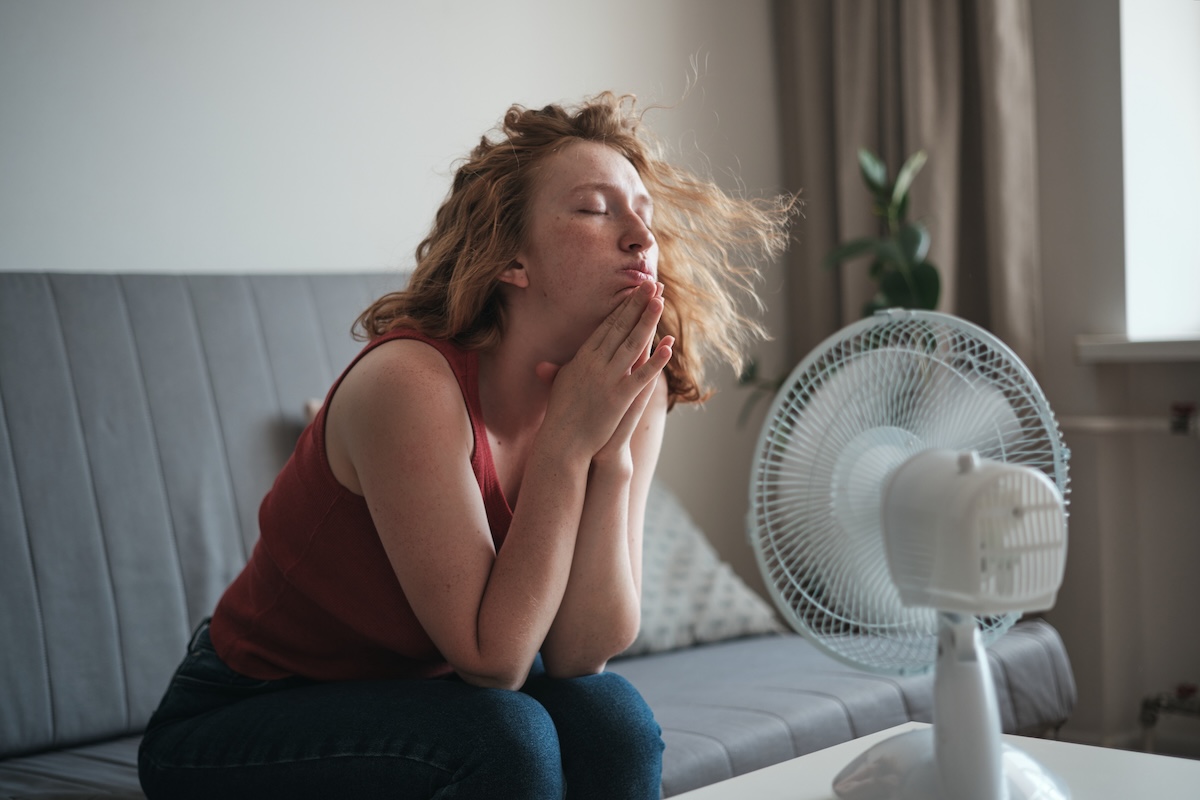

We may earn revenue from the products available on this page and participate in affiliate programs. Learn More ›
High relative humidity levels in a home can lead to a number of potentially serious health issues, including asthma, allergies, and various other respiratory illnesses that are triggered by mold, dust mites, and peeling lead paint. Outdoor humidity levels in already-humid regions are increasing with climate change, since a warmer atmosphere can hold more water vapor. If you live in an area with high humidity, it’s time to take steps to keep your home comfortable and free of mold.
If you’ve noticed water leaks or stains, rotting wood, musty odors, rusting or corrosion, or excessive condensation in your home, understanding how to lower indoor humidity is crucial. Every one of these small change you can make adds up. If these changes aren’t enough to bring the moisture levels down to a comfortable level, investing in a dehumidifier might well be worth the cost.
1. Move houseplants outside.

Houseplants can contribute to your home’s humidity levels. Some varieties, such as spider plants, Boston ferns, English ivy, rubber plants, and peace lilies, are specifically recommended for increasing the humidity in a dry home. Moving houseplants outside when the home is very humid and temperatures are suitable for the plants can help moderate the moisture situation.
2. Avoid line-drying laundry inside.

Folks who prefer to line-dry laundry should consider doing so on an outdoor clothesline rather than inside the home. As moisture on clothing evaporates into the indoor air, it can contribute to high humidity in the house. Moving damp laundry outside will eliminate this problem while also helping your clothes and linens dry more quickly.
Causes of High Indoor Humidity
Ideally, indoor humidity levels should fall between 30 and 50 percent. Some conditions that cause humidity levels inside a house to climb higher than 50 percent include:
-
- Poor ventilation: Homes that don’t have adequate ventilation and airflow are also likely to be more humid.
-
- Oversized or poorly functioning HVAC: Air conditioners in particular help control moisture and move air. If your AC is too large, has leaky ducts, or works poorly, it can add to buildup of humidity.
-
- High outdoor humidity levels: If it is muggy and humid outside, it is more likely to also be humid inside the home.
-
- Interior plumbing leaks: Leaks from sinks or other water sources will introduce more moisture into the air, resulting in elevated humidity levels inside.
-
- Inadequate insulation: If your home’s insulation isn’t sufficient, it will let in more damp and humid air from the outside, while also allowing more cool air to escape.
-
- Poor ventilation: Homes that don’t have adequate ventilation and airflow are also likely to be more humid.
3. Open the windows.
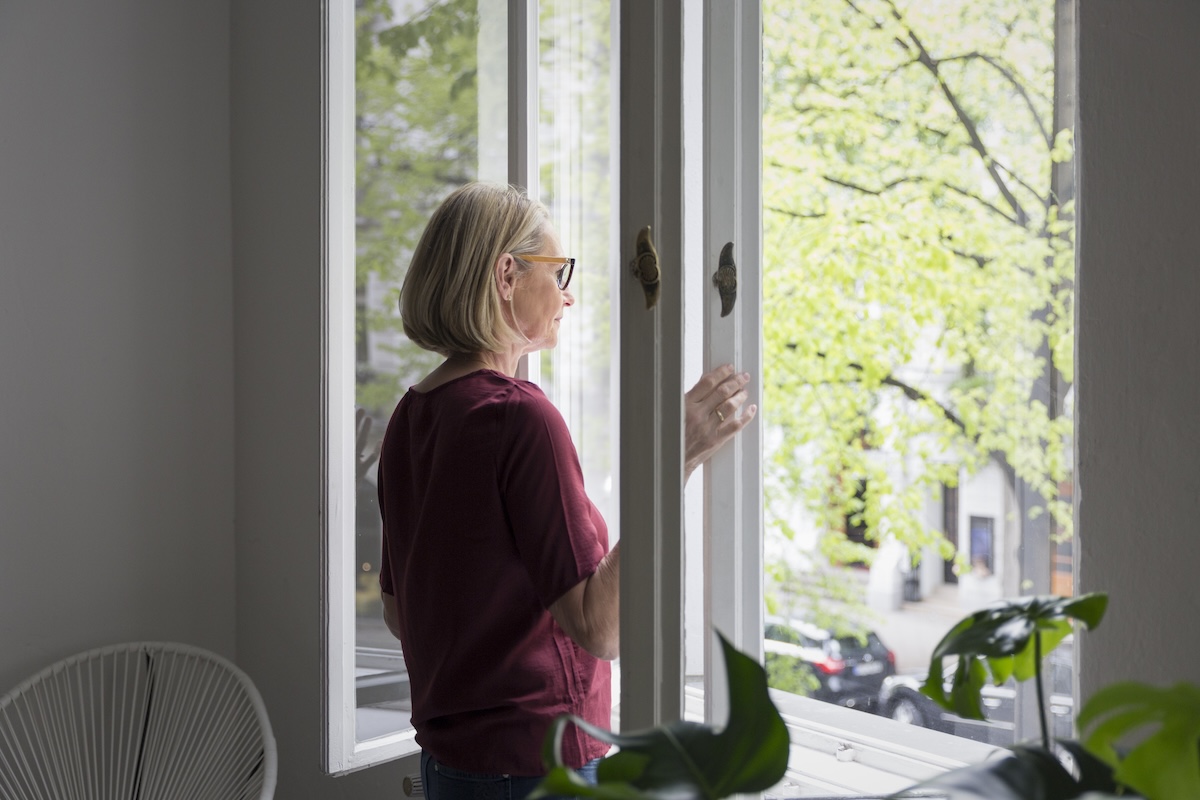
Reducing humidity in a room naturally can be as easy as opening up the windows. Opening windows allows for more airflow and ventilation, directing more humid air out of the house. Opening the windows also lets in more natural sunlight, which can help to dry out moist air. However, if it’s raining or especially muggy outside, close windows and doors. Wait and make the most of a gentle breeze or cooler temperatures without letting more moisture in. Keep basement windows closed except when the weather is dry and cool.
4. Keep interior doors open.
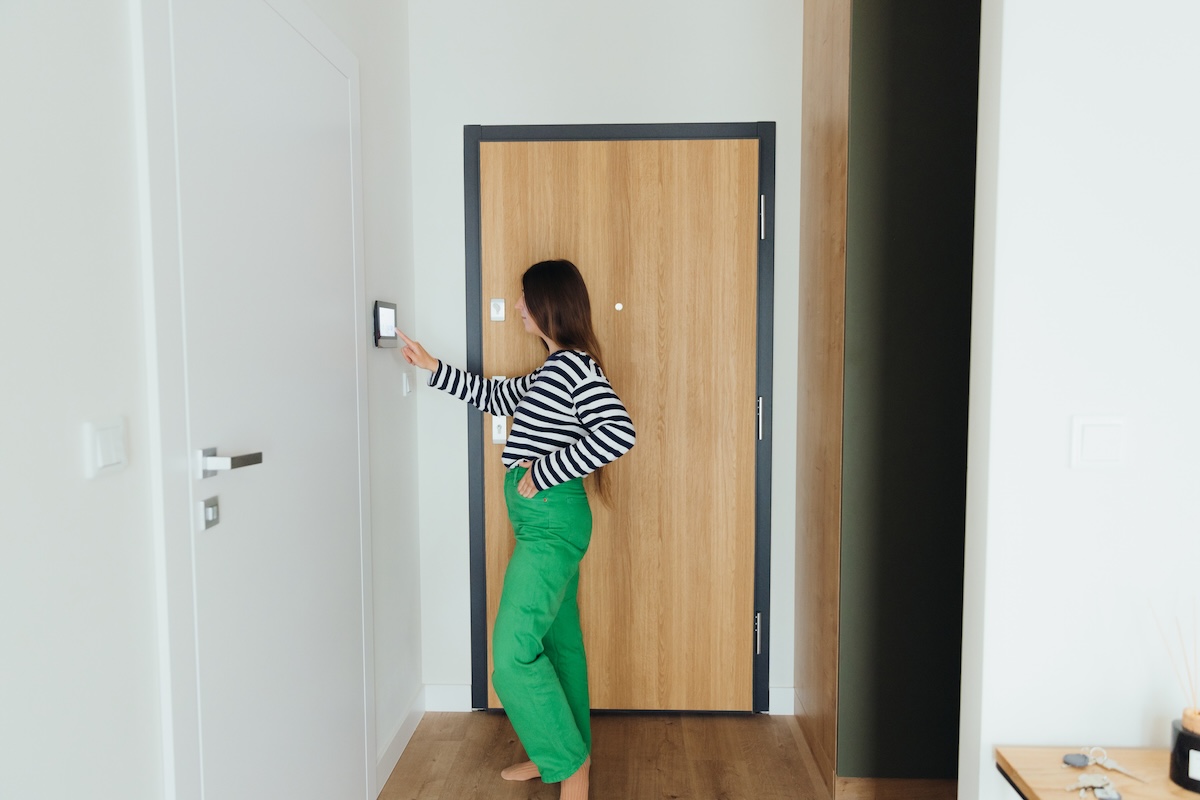
Another solution for lowering humidity is to keep interior doors open in your home. This also allows for better airflow throughout the house. When rooms are closed off, the air can’t move around as much, which can increase humidity levels. If you have a very humid basement or laundry room, prop the door open so dry air from the rest of the home can cycle through.
5. Make a rock salt dehumidifier.

An inexpensive DIY solution to absorbing condensation and moisture is a rock salt dehumidifier. Simply drill or punch several holes into the side and bottom of a 5-gallon plastic bucket; if the holes are large enough for rock to go through, you can cover them with wire mesh. Nestle the drilled bucket inside a second 5-gallon bucket. Fill the inside bucket with rock salt, which will absorb moisture and drip into the intact bucket. You can even set a fan near a window with condensation and direct it toward the bucket. Empty the outer bucket regularly and replace the rock salt as needed.
6. Place bowls of baking soda or cat litter around the house.

Baking soda absorbs moisture, so it can help control humidity in the home. Simply place bowls of it around the house to draw water from the air. If you have pets, you’ll want to cover the bowls with very thin cloth to help minimize spills and keep Fido and Fluffy out of the powder. Cat litter also absorbs moisture, so placing small bowls of it in strategic locations around the house, such as near an instant or steam cooker or the shower, may also help lower humidity.
7. Stash charcoal briquettes in humid rooms.

Yes, the same briquettes employed for grilling food—as long as they are natural, and free of mesquite and other additives—will absorb moisture and smells to improve the indoor environment. Put the briquettes in baskets or trays around the house, hang them up in old socks, or place them on shelves in any rooms that feel too humid.
8. Minimize tasks that will further increase humidity levels.

Many daily chores and practices—such as taking long, hot showers, boiling water for cooking, and using a laundry steamer—can lead to increased indoor house humidity. When it starts feeling too muggy inside, avoid these activities or keep them to a minimum. Try taking a cooler shower, perhaps, or leave the lid on the pot when boiling pasta water.
9. Use fans.
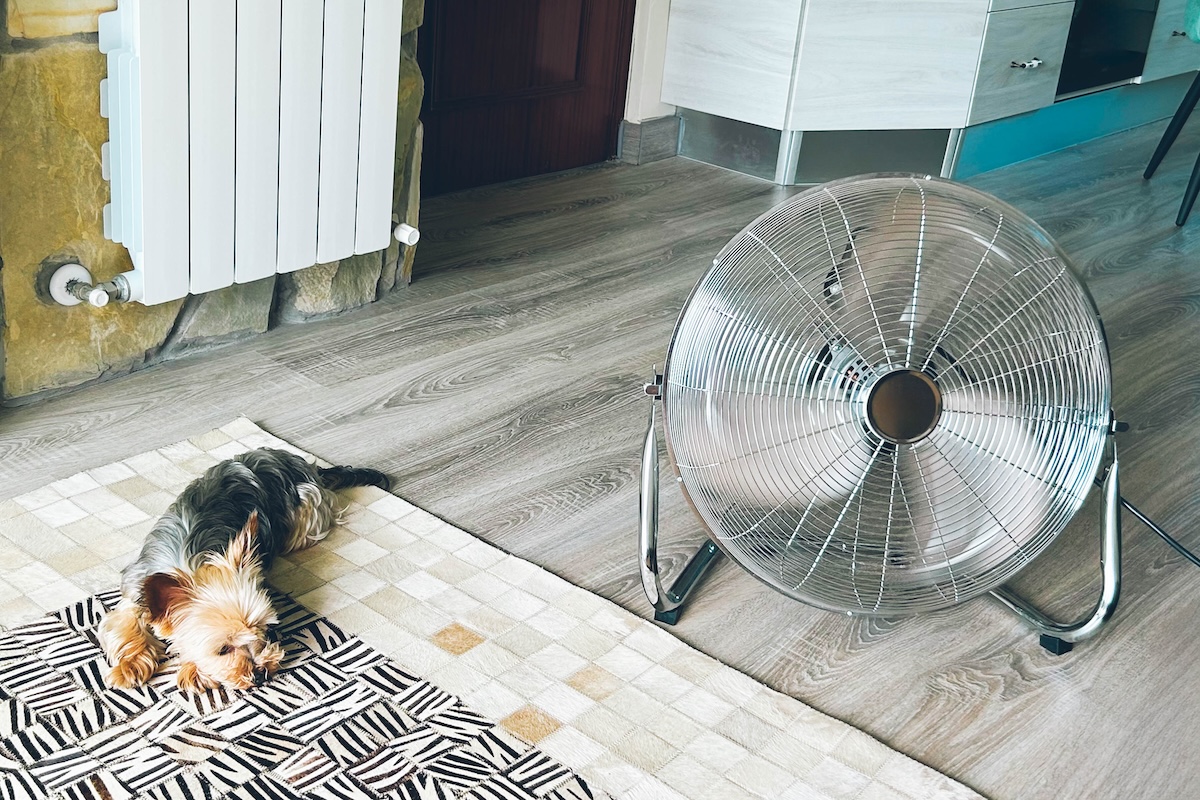
Ventilation and airflow are the secrets to getting the humidity level in house under control. Some of then best ways to get the air flowing around your home are to run exhaust fans when cooking or showering, and to keep ceiling fans and floor fans running throughout the house. If your air conditioner has a fan mode, turn it on to circulate air between cooling or heating, or program it to run for 10 to 15 minutes each hour. The more the air moves around the house, the more humidity will be released from it.
10. Turn up the air conditioner.
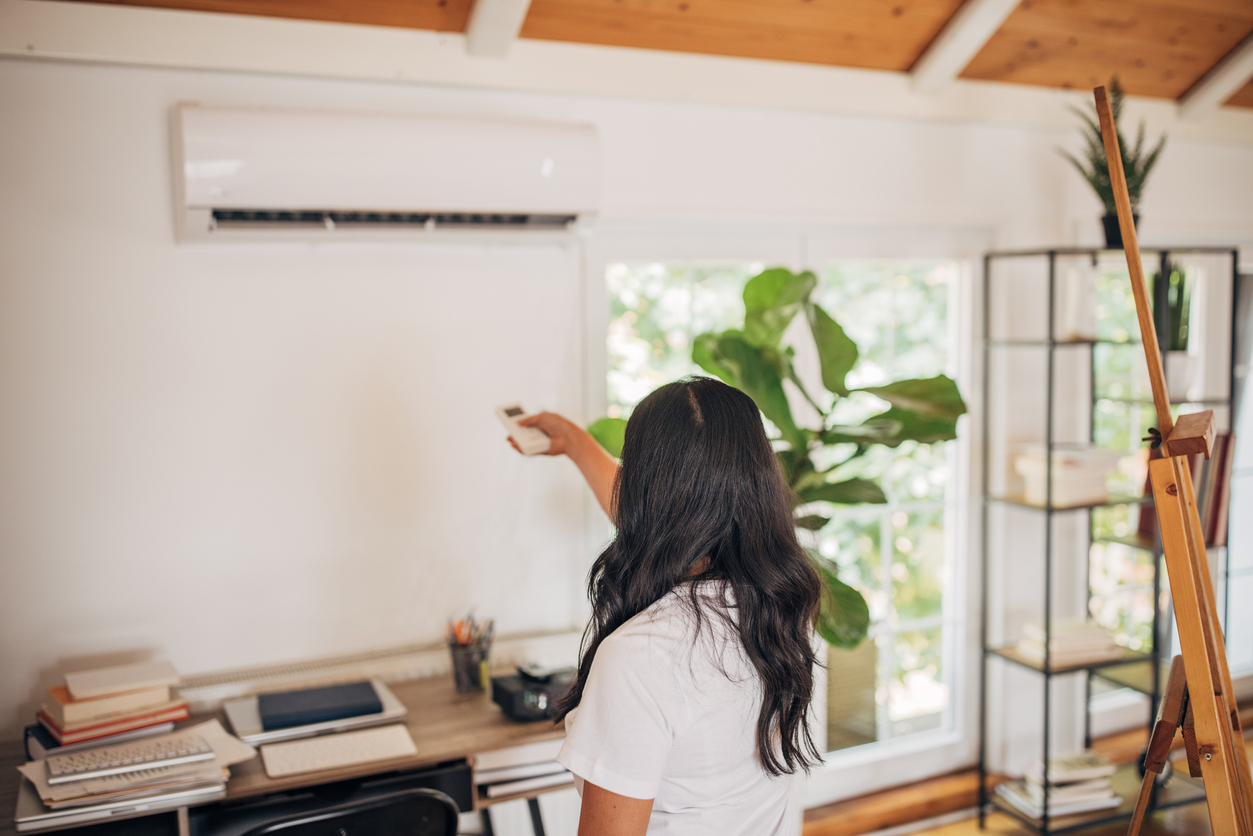
You may already know that heating a home can decrease relative humidity levels. However, on a hot summer day, the home’s air conditioner can help with humidity control. An air conditioner pulls air in the home over an evaporator coil containing refrigerant. During this process, heat is collected and moisture condenses on the coils, similar to how a dehumidifier works. Condensation then falls into a collection pan, and the cooler and dehumidified air is sent back into the room.
11. Use weatherstripping to decrease drafts.

The appearance of condensation on the inside of your windows may signify that they are letting hot and humid air inside. To resolve this issue, try adding weatherstripping along the windows and doors to seal any leaks and eliminate drafts. Adding a door sweep to the exterior doors will also help prevent cold air from escaping and humid air from getting in.
12. Replace or clean air filters.

If your exhaust fan has a filter, such as those on over-range microwave ovens, check and replace the filter regularly to ensure it continues to work as it should. Retain and follow manufacturer instructions for how often to check and clean or replace dehumidifier filters, which can become dirty quickly, often within 2 to 3 months. Likewise, always check and replace air filters in HVAC units per manufacturer recommendations. A dirty air filter reduces airflow and prevents air conditioners from removing humidity as they should.
13. Use a room dehumidifier.

Perhaps the most effective way to decrease humidity in a space is to use a room dehumidifier. These machines pull air from the room over a very cold coil, which causes any moisture in the air to condense and then drop into a collection bin. As this process continues with more and more air from the room passing over the coils, the overall humidity level decreases. Standalone and dehumidifiers like the Eva-Dry 16-ounce dehumidifier, the budget pick in our guide to the best dehumidifiers, are relatively affordable and compact solutions for a single room.
14. Install a whole-house dehumidifier.

Investing in a whole-house dehumidifier might be necessary if you have tried other methods and still have trouble getting the humidity levels in your home under control. These units connect to a home’s HVAC system and are more expensive (and more effective) than standalone units, dehumidifying spaces up to 5,500 square feet. Also called ducted humidifiers, whole-house dehumidifiers can help some homeowners avoid making costly repairs to their home’s structures, including mold remediation. When selecting a unit, be sure to consider its coverage area, the unit’s daily capacity for moisture removal, and its energy efficiency.
15. If all else fails, call in the professionals.

Professional moisture control and foundation repair companies often can identify reasons why it’s so humid inside your home, and come up with a custom solution. Depending on their diagnosis, they may recommend a sump pump, a vapor barrier system, or sealing off leaks in the foundation.
